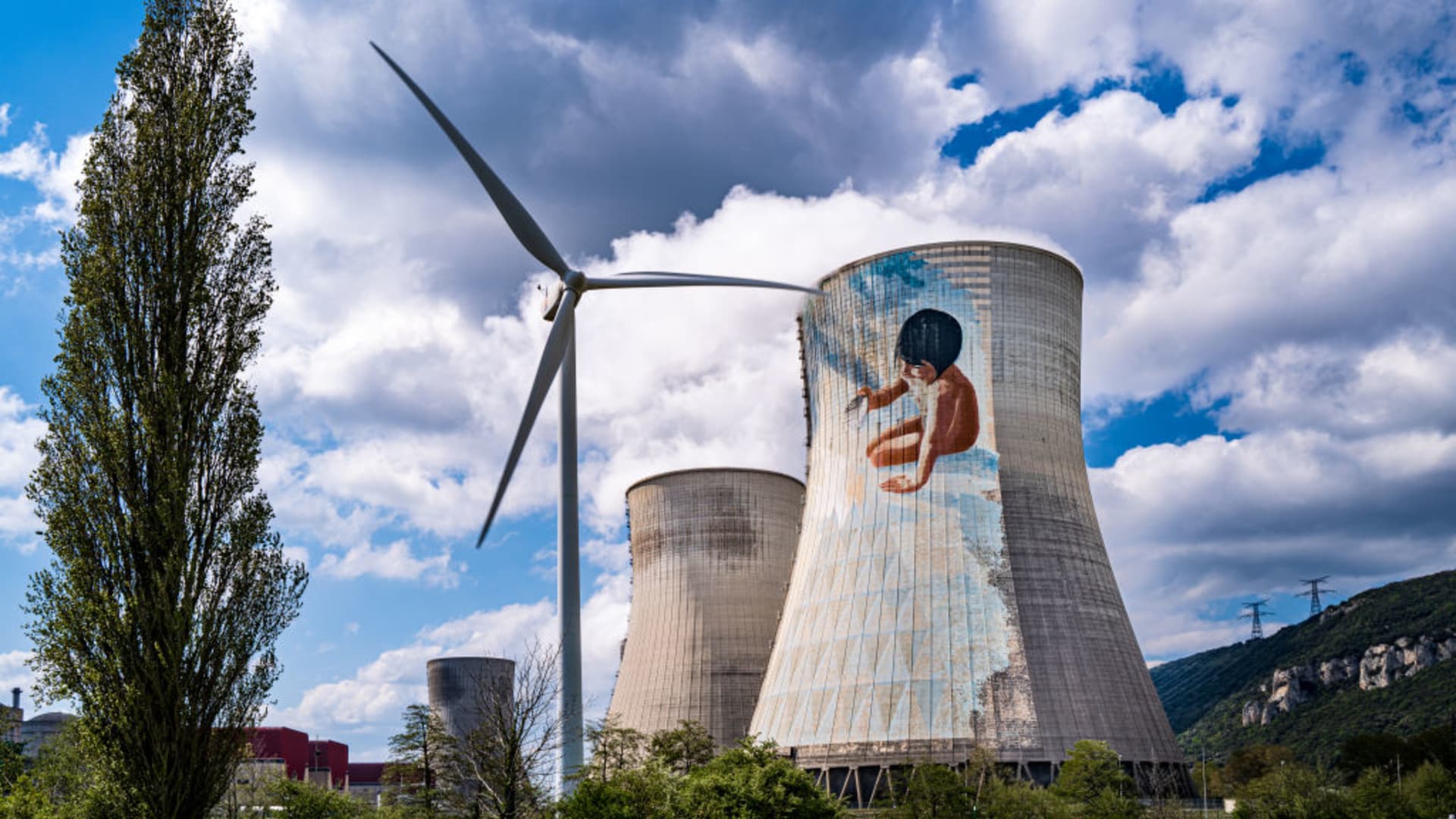
Wind turbine and cooling towers of the Cruas-Meysse nuclear power plant in France, April 12, 2021.
Jean-Marie HOSATTE | Gamma-Rapho | Getty Images
Russia’s war in Ukraine has pushed countries around the globe to wean themselves from Russian oil and natural gas.
Parallel conversations are imminent in the nuclear energy space, too, because Russia is also a dominant player in global supply chains of nuclear reactor technology, as is detailed by a new paper published Monday from Columbia University’s Center on Global Energy Policy.
There were 439 nuclear reactors in operation around the globe in 2021, and 38 of them were in Russia, an additional 42 were made with Russian nuclear reactor technology, and 15 more under construction at the end of 2021 were being built with Russian technology.
Reducing or eliminating dependence on nuclear supply chains from Russia will vary by country and need.
If a country has not yet constructed nuclear reactors, then they can, from the beginning, decide not to contract with Russia. The U.S., France, Korea and China are “viable” supplier options, according to the paper.
Second, if a country already has Russian nuclear reactor models, VVERs, then probably looks to Russia for repair parts and services. (VVER stands for ‘water-water energy reactor’ in Russian, which is vodo-vodyanoi enyergeticheskiy reaktor in Russian, ergo the acronym.) In this case, countries can get repair assistance from Westinghouse, which is headquartered in Pennsylvania, according the the report.
Then there is the issue of fuel. Nuclear fission reactors are fueled with enriched uranium.
Russia mines approximately 6% of the raw uranium produced annually, according to the report. That’s an amount that can be replaced if other countries that mine uranium increase their uranium mining.
However, uranium does not go directly from a mine into a nuclear reactor. It has to go through conversion and enrichment before it can be used as fuel in a nuclear reactor.
Here, Russia is a dominant player. Russia owned 40% of the total uranium conversion infrastructure in the world in 2020, and 46% of the total uranium enrichment capacity in the world in 2018, according to the report. (This was the most up-to-date data publicly available, according to the report authors.)
This is where the U.S. and allied countries would need to focus their attention, according to the report, which was co-authored by Paul Dabbar, a former under secretary of Energy for Science at the Department of Energy, and Matthew Bowen, a research scholar at Columbia’s Center on Global Energy Policy.
Besides Russia, these uranium conversion and enrichment capabilities exist in Canada, France, Germany, the Netherlands, the United Kingdom and the United States.
Those capacities “are enough to replace at least some” of the conversion and enrichment that Western nuclear reactors need, but it’s not clear that the capacity will be able to fully replace the Russian capacity.
The U.S. also needs to be prepared for fuel that goes into advanced reactors, which are currently in development, and require uranium enriched to 15 to19.75%, where conventional light water reactors that are currently in operation in the United States use uranium enriched to between 3 to 5 %.
This high-assay low-enriched uranium (HALEU) fuel is currently only available at a commercial scale from Russia, according to the report.
“More investment in mining, conversion, and enrichment facilities may be necessary to fully extricate Western nuclear fuel chains from Russian involvement, Dabbar and Bowen write in their report. “However, adding sufficient new conversion capacity and enrichment capacity will take years to accomplish.”
But to convince private companies to dedicate money and resources to uranium infrastructure, they need the government to commit to not reverting to Russian supplies.
“Their worry will be that in a year or two, perhaps less, Russian uranium products will be allowed back into national markets and will undercut them, causing them to lose out on their investments,” Dabbar and Bowen said.
In the United States, there is only one uranium conversion facility — it’s in Metropolis, Illinois — and it has been on standby since November 2017. Its reopening is “pending market improvement and customer support,” according to a power point presentation from the partnership between General Atomics and Honeywell that operates the plant, ConverDyn. It won’t be able to return to operability until 2023, when it could convert 7,000 tons of uranium per year. To ramp up to 15,000 tons per year, it will take the one plant longer than 2023.
Therefore, Dabbar and Bowen said it would be prudent for the United States to wean off Russian confinement capacity “a period of years not months.”






